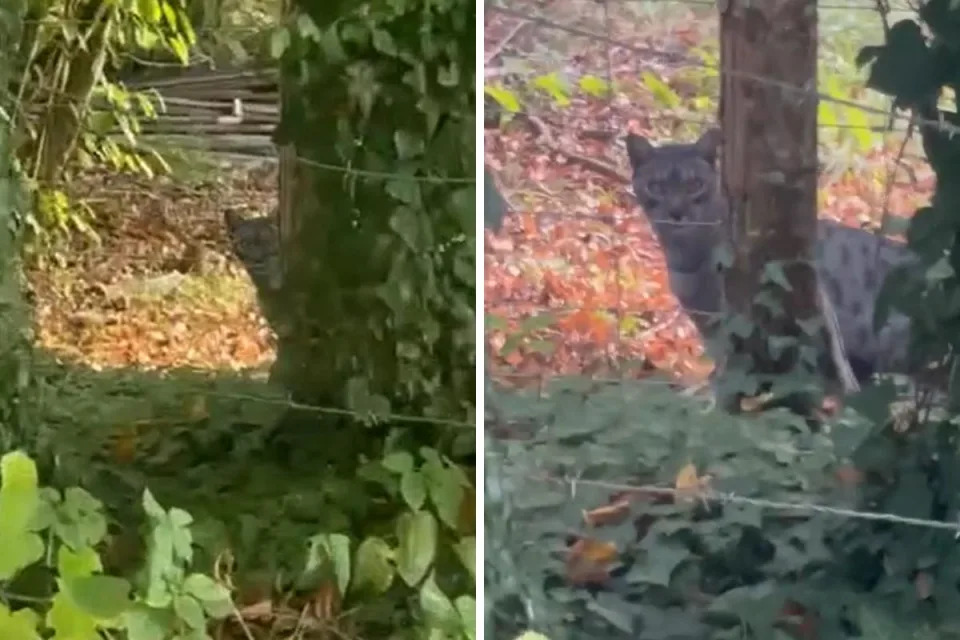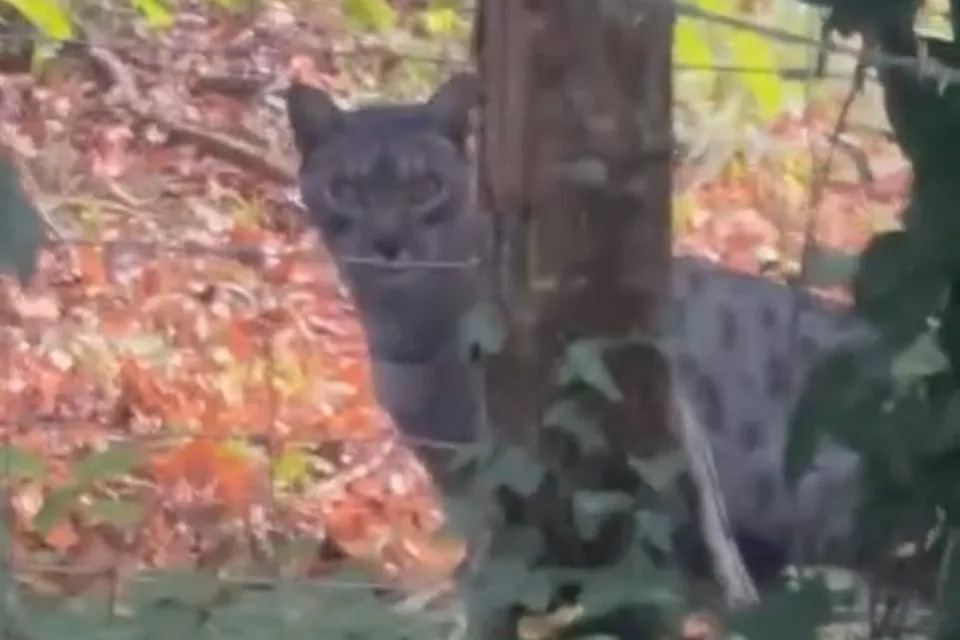Today I received my tenth call over the much publicised "British Big Cat" documentary. The radio station involved, like the newspapers and other radio stations in the last three weeks, wanted to know whether I was involved in this documentary. I told each one "No" which got responses of disbelief and "But you've been working on this since the 1970s -how can you not be involved?"
Well, first a quick history. I started out in 1976 to disprove all the "Silly stories of big cats in the British countryside" and being a young field naturalist I had no doubt that by following the evidence I would succeed. Yes, there might be the odd escapee but that was it.
In 1977 things changed. In that year I had compiled enough information from eye witnesses and anecdotal evidence that I was nonplussed. Respected field naturalists (now long since gone) told me of their observations. Arthur Cadman in Scotland not only communicated with me by letter but also telephone and he told me how he had been keeping a group of puma under observation for some time and that one was getting old and might meet its end by shotgun on a farm raid. In fact, the aging female puma was caught and went to a wildlife park until it died and was named Felicity. Once it died it was stuffed and mounted.
The people I spoke to knew wildlife and their observations were in optimum conditions and some at not that great a distance (20-200 yards/m). Police then told me of their sightings and I realised that it was not only large cats on the loose and breeding in the UK. I set up the Exotic Animals Register and in 1977 was officially to become an "exotic animals" advisor to UK police forces which still happens to this day although I supposedly retired in 2015 (you really do not retire from wildlife work).
By the 1990s I along with help from a university, had carried out field survey work in Wales -the fella carrying out the survey work was out on a sunny day when several yards away he observed a large cat. The work is mentioned in The Red Paper 2022: Felids. We not only recorded attacks on livestock along with photographic evidence but also found scratch posts, carcasses in tree branches and had an expert in the field examine bones and identify the teeth markings from "a large felid". A police force also had a hair examined using DNA and it was clearly identified as Panthera pardus (leopard and in this case black leopard).
https://exoticanimalsregister.blogspot.com/2017/12/im-not-being-rude-butpuma-poo.html
I did not just speak to observers but surveyed what other wildlife (prey species), water sources and type of habitat. It was possible to track a cat on its specific territorial walkabout so by 2000 we had proven to our satisfaction that there were certain cat species in the UK and when one witness is a senior lecturer in zoology with an international reputation that is a bonus. I even managed to get a signed affidavit from a person who watched a trapped leopard killed by a MAFF assigned vet (also included in The Red Paper Felids).
https://exoticanimalsregister.blogspot.com/2020/11/the-official-policy-is-to-euthanise.html
The type of cats that live in the UK with a history going back well before the 19th century are: lynx (lynx sp.), puma (puma concolor) and the melanistic leopard (Panthera pardus). There are smaller cats but these I discussed in the book along with how one species may be what UK police wildlife officers called "The Hooper cat".
https://exoticanimalsregister.blogspot.com/2017/12/guide-to-main-four-uk-exotic-animals.html
Done and dusted by 2000. After that period the fantasy, hoaxing, etc that the internet brought us made cataloging real observations near impossible. Out of 100 video clips and photographs not one is of anything other than domestic cat, pet dogs, possibly a boar and so on. The social media fan club for 'Big cats' has spiralled out of control though the press and media love this for "silly" stories.
I have stated over and over again that there is only one member of the big cat family known in the UK; the leopard. That is it. The puma is considered a member of the medium sized cat family and the others Small cats When people considering themselves experts on the subject and running groups have main reference sources that are discredited (Janet and Colin Bord's Alien Animals and the works of Di Francis) you can see why so much rubbish is spouted. Discredited books from 30-40 years ago are of no use.

Citing the number of "big cats" in the UK as "in the hundreds" is so silly I feel ashamed just reading the quote. I have dealt with possible population numbers before on this blog
https://exoticanimalsregister.blogspot.com/2022/04/some-250-pumas-and-250-black-leopards.html
I have asked over the years that anyone -individual or group- that believes they have evidence of these cats to get in touch. After all I am a naturalist, not a debunker (or I've wasted 50 years of my life) and I look at the evidence. I avoid press and media attention if I can so it's a one-on-one thing BUT I will give my honest opinion. No takers. Why not? A recognised "expert" (I hate that term) in the subject you only have something to gain.
Now we come to the naming of the species in the UK. As it stands the various cats have created no environmental damage and according to some estate owners and game keepers the cats have made some deer herds healthier by taking the sick and weak. Environmental impact is something I look at. Also, we can trace a history of these cats back centuries and the 18th-20th century saw a peak in importing and selling exotics to anyone who had the money. If anything these cats would be considered a sub-species.
There has been a problem since the 1990s in that people think they can give out a species name. This site explains things "for kids" so ought to be clear enough:
http://www.biology4kids.com/files/studies_taxonomy.html#:~:text=Scientific%20names%20follow%20a%20specific,the%20second%20is%20the%20species.
Rules of Taxonomy
Every known living organism on Earth is classified and named by a set of rules. Those rules are used by all scientists around the planet. The names are called scientific names, not common names. Common names are the ones you might use when talking with your friends. You call your pet a dog or a cat (the common name). Scientists call those animals by a set of several names like Canis familiarus. That's a dog.
Scientific Names
Scientific names follow a specific set of rules. Scientists use a two-name system called a Binomial Naming System. Scientists name animals and plants using the system that describes the genus and species of the organism. The first word is the genus and the second is the species. The first word is capitalized and the second is not. A binomial name means that it's made up of two words (bi-nomial). Humans are scientifically named Homo sapiens. You may also see an abbreviation of this name as H. sapiens where the genus is only represented by the first letter.
A scientific committee decides on a scientific name and not a documentary maker or someone running a 'Big Cat' group. "Panthera britannicus" (incorrectly "Panthera Britannicus"") does not exist and never will. The biggest problem is that these people are claiming that every melanistic large cat is a member of the Big cat family. What of black pumas? https://exoticanimalsregister.blogspot.com/2021/01/the-black-puma-there-is-no-argument.html
Are these people disregarding all the observer testimony of regularly coloured puma? Have those reports suddenly vanished and the only cat existing is the black leopard -what about other cat species in melanistic form -are these also counted as Panthera britannicus? We know the cats that are living in the UK and so the confusion this creates for the public is why you have people describing panthers as puma and puma as panthers "because the experts said that is what it is!" and the experts are big cat fans or documentary film makers. "I sighted a British big cat" followed by a description of a jungle cat or lynx is internet fed stupidity. "The panther was a brownish colour" and other details showing a puma was seen....it goes on and on.
What exactly are UK 'Big Cat' groups out to achieve? We proved over 20 years ago the cats are here. Do they want them hunted down and killed? Do they want them recognised as a breeding sub-species? Trapped and put into wildlife parks (where there is an over abundance of black leopards -showing how 'rare' they are, pumas and lynx)? Or are they waiting for the next big fad to come along?

If you have evidence or think you have evidence then submit it. Have it checked and get an opinion on it. Or just make it clear you want to dress up in cammo in the English countryside as a hobby.
And for any reporters checking here: NO I have nothing to do with that documentary!















